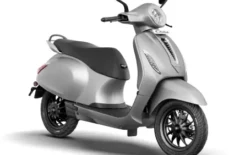Cranes are essential heavy machinery used across various industries and construction sites. These powerful lifting devices play a pivotal role in moving heavy loads with precision and efficiency. In this article, we will explore the different types of cranes and their applications.

Types of Cranes:
- Mobile Cranes:
Mobile cranes are versatile and widely used for their mobility. They are mounted on wheels, making them easy to move around construction sites.
Common types of mobile cranes include rough-terrain cranes, all-terrain cranes, and truck-mounted cranes.
- Tower Cranes:
Tower cranes are a common sight in cityscapes, particularly on large construction projects. They are fixed to the ground and offer high lifting capacities.
Tower cranes are known for their height and stability, making them suitable for tall building construction.
- Crawler Cranes:
Crawler cranes move on tracks, providing excellent stability. They are capable of lifting extremely heavy loads and are often used for specialized tasks like bridge construction and heavy machinery installation.
- Overhead Cranes:
Overhead cranes are designed for material handling within factories and warehouses. They are suspended from a structure and can move heavy loads horizontally.
- Telescopic Cranes:
Telescopic cranes feature a telescoping boom, allowing them to reach great heights. They are commonly used in tasks like lifting materials on high-rise buildings.
Applications of Cranes:
- Construction:
Cranes are indispensable on construction sites, where they are used for lifting steel beams, concrete blocks, and other building materials.
- Shipping Ports:
Ports rely on large cranes, such as gantry cranes, for loading and unloading cargo containers from ships.
- Mining:
In the mining industry, cranes are used for heavy lifting and transporting materials in challenging terrains.
- Agriculture:
Cranes are employed in agriculture for tasks like lifting and moving heavy equipment and bales of hay.
Conclusion:
Cranes are vital tools in various industries, contributing to the efficiency and safety of heavy lifting tasks. Understanding the different types of cranes and their applications is crucial for selecting the right equipment for specific jobs. Whether in construction, manufacturing, or logistics, cranes continue to be an integral part of modern industrial processes.
visit: asiaputra,com












